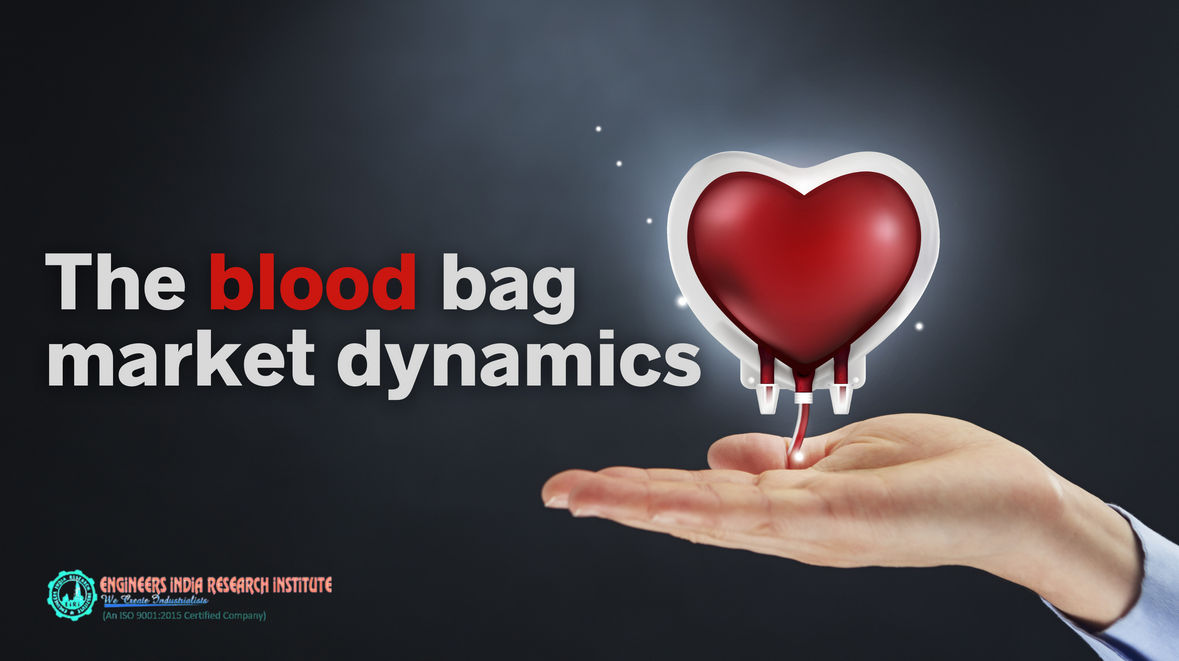Everything you need to know about Disposable Blood Bags: Manufacturing Technology, Global Market Status and the COVID Impact
The most significant factor for the success of any product is “convenience.” Be it the manufacturing of a wearable or the production of a utensil, if your product doesn’t offer convenience, other qualities would hardly matter. This remains one of the major reasons why Blood Bags have been able to replace the long-preferred glass bottles.
From collection to storage to even the processing of blood components, blood bags make for suitable, safe, and befitting containers within the blood banks. They are extensively used for the storage and transportation of blood, and their ergonomic design further complements the appropriate mixing of blood and anti-coagulants.
What makes the market analysis of these bags so critical is the fact that they come along in numerous types, are employed in hospitals, NGOs and blood banks, and dominate the North American, Latin American, European, Middle Eastern, African, and Asian markets.
To be precise, the blood bank market is expected to cross the USD 500 million mark by the end of 2027 and further escalate to reach the USD 700 million mark in the subsequent three years. Considering them to be a very basic and often overlooked component within the health care sector, these blood bags can pave the way for high-return investment opportunities.
Manufacturing Technology and the Opportunity that Lies Ahead
Blood bags across the world and India, in particular, are made using Polyvinyl chloride or PVC — a synthetic plastic polymer extensively employed in the health care sector. The use of PVC is fueled by the fact that it exhibits high levels of biocompatibility. But that’s not it, PVC’s advantages and applications extend way beyond what one can imagine owing to its artificial source.
Just to give you a brief background of why PVC is preferred for blood bags:
- The polymer is safe, something that has been proved over the years through immense testing
- It can be easily sterilised using steam or ethylene oxide, which is one of the principal reasons why it is preferred over glass bottles.
- It doesn’t react to different liquids and, especially blood, for its composition is very stable.
- As opposed to the intuition, this plastic is biocompatible and can be made to demonstrate further compatibility by surface modification.
- It costs relatively lower and can be recycled, thus, saving resources.
To this end, if you’re thinking of investing in PVC Blood Bag manufacturing, you are thinking about it quite right. As the demands for blood bags in hospitals increase, the employment of PVC will become critical than ever.
Gathering insights into the Global Market Status of Blood Bags
It is noteworthy that the market for Blood Bags expands with an increase in the number of donors. According to the recent evaluations of the same, the number of blood donors has risen significantly in the Asian region. From what WHO has laid out, the blood donors between 2013 and 2018 increased by 7.8 million.
This rise is directly proportional to the global market valuation of the Blood Bags — a fact that will be prominently visible in a few years from now, specifically in the Asia Pacific region.
Another aspect that influences the global market status for blood bags production is the expansion of tender-based purchasing. This is in alliance with your endeavours, in case, you are interested in purchasing the tenders for delivering the blood bags to the hospitals, NGOs, and blood banks.
There’s another stat that’s impressive and speaks in favour of the opportunities in this segment. In 2016, the global disposable blood bag market was valued at USD 279 million. It was expected that this value would almost double in ten years. It seems like the projections were close to being spot on.
Assessing the impact of COVID-19
COVID-19’s influence is unprecedented, for it has impacted the very core of health care delivery. Since it is still at its helm, it is challenging to put forth the impact of the same in numbers; however, some of the facets can be outlined to provide an overview of what to expect.
- Since the advent of COVID-19 was unexpected, there was little the manufacturers could do to tackle the surge and drop in demand.
- The administrations of almost all the countries that have been hit by the pandemic have formulated the blood transfusion guidelines, which are very different from what conventionally prevails.
- It has been observed that the governments have put the blood-related treatments on a low priority, and understandably so.
This brings us to the conclusion that the market will be in a better state post the pandemic — hopefully in the midst or the second-half of 2021.
Get Detailed Project Report of the Blood Bag market
Now that you’re aware of the current market condition, it will be feasible if you take the first step towards actually growing in this sector. At Engineers India Research Institute, we complement your growth through the delivery of up-to-date, pin-point, well-defined and clear analysis of the Blood Bags market. We ensure that you are well equipped with the resources required to drive your growth into this competitive sector.




